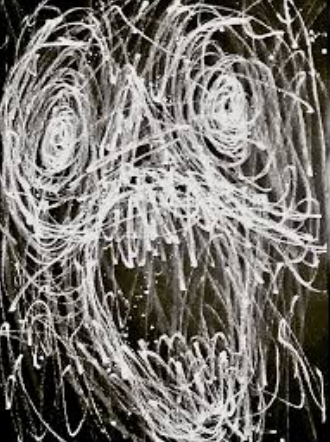An Examination and Report of Schizophrenia
June 10, 2022

In most of the US and here, on the west coast, we all treat mental health as a somewhat open topic that we all encourage each other to strive for. Yet many mental illnesses are very commonly mistreated, misunderstood, and largely unknown beyond the more common mental illnesses of Depression and Anxiety. So today I will bring light to one of these specific misunderstood mental disorders in honor of men’s mental health month. Schizophrenia is a syndrome that affects 1 in 100 people worldwide. It is defined as a mental illness that impacts the normal connections between emotions, stimuli, thought, and behavior. Creating the symptoms of this disorder; which include faulty perceptions of the world, irregular emotional responses, social isolation, cognitive impairment, and mental fragmentation. But because Schizophrenia is a syndrome, it has many different types and effects stemming from the disorder , So I gathered a report corroborated from many different credible sources to examine and explain Schizophrenia in a comprehensive and journalistically objective way for the education of the masses.
Common Misconceptions and Stigmas
There are a lot of misconceptions about people with schizophrenia and related psychological disorders; so before I begin I’d like to clear up any misconceptions and stigmas around this commonly misunderstood illness. The most common misunderstanding is that people can have multiple personalities (dissociative identity disorder) from this illness. While this isn’t true it is reported that 64% of people believe this about schizophrenics, this may have come along as people that experience delusions may be misconstrued as a split personality; when instead is simply a dissociation with the real world, not a second personality. Another common misconception is that schizophrenics are both violent and dangerous. While there are certain cases of paranoid schizophrenics with violent tendencies, these cases are rarer and can be brought on by different environmental factors, medication and therapy also decreases the already low chances of violent actions. Many people also believe that sudden and violent psychotic breaks are frequent; while that is a symptom of schizophrenia, there are many warning signs before a mental break happens as well as preventative measures that can be taken; including the fact that only 8% of schizophrenics are violent. The final stigma that needs to be cleared up is that schizophrenics cannot take care of themselves. While 20% live in group homes, 28% live with family members, and 52% of people with schizophrenia can live on their own. And even the 48% that live with others can have mostly independent lives.
Causes and Risk Factors
While there are many environmental and genetic factors that can cause schizophrenia. We don’t really know how these risk factors affect the brain and the onset of the disorder. Although the main cause of schizophrenia is a chemical imbalance in the brain; with the constant reuptake of neurotransmitters like dopamine, glucamate, and serotonin in mainly the frontal lobe changes the brain chemistry of the person affected and function of the brain. Warping the brian’s perception of external stimuli like looking, hearing, and touch. This extra sensory perception could also make irrational thoughts more prevalent, leading to the main “fragmented mind” symptom of schizophrenia. People that have schizophrenia do not develop it over time but instead are born with it, or at least a chance to develop it. Though it may never progress past a certain point, people who are not at risk for schizophrenia cannot get it from any amount of environmental factors. The highest chances of being diagnosed with schizophrenia is at young to mid adulthood for men, and middle aged for women. The main onsets of schizophrenia include use of psychoactive drugs such as marijunana, traumatic events, stressful environment, and brain abnormalities. Like the formerly mentioned neurotransmitter reuptake from irregular brain function or anti-depressants. Risk factors of this syndrome are very easy to recognize including a family history of the disorder, a parent with depression or bi-polar disorder, an older paternal father, and pregnancy complications. But there is good news for this too, if risk factors are identified as well as some of the early symptoms. The onset of this disorder can be stopped or at least slowed down.
Positive, Negative, and Cognitive Symptoms
All of the symptoms, positive and negative, encompass a wide spectrum across all the different schizoid-disorders. So to keep it concise I will list many of the shared and common symptoms. But first I have to define what negative and positive symptoms are. A negative symptom is something that takes away from a normal person. While a positive symptom adds to the experience of a schizoid patient. The negative symptoms can be depressive symptoms like a flat affect or blank stare. Inappropriate or diminished emotional response; like laughing at a tragedy or lowered emotional function. And finally the most obvious, social withdrawal from both friends and family. Because of this it may take longer to get help without encouragement or support. The cognitive symptoms, both negative and positive, which affect the normal function of the brain like difficulty concentrating and poor memory, can also include more obvious symptoms like disorganized speech and thinking: creating a “word salad” of sorts without noticing and jumping between topics that have no correlation; and a degree of mental fog with difficulty focusing. People also experience irregular, catatonic motor functions wherein someone might sit still in uncomfortable positions, move strangely and randomly, or repeating words and behaviors. The positive symptoms of schizophrenia are far less likely to be confused with another disorder, like depression, and are as follows: Hallucinations; these can be visual, auditory, and even sensations of touch and smell. And delusions, both paranoid and not; are false beliefs that cannot be swayed by logic or reason. These can be delusions of grandeur and immense power, believing you are related to an important person or figure in history, false memories, and paranoid delusions of other people, doctors, medication, believing one’s thoughts aren’t their own and a feeling of being watched or stalked.
Treatment and Recovery
While there is no cure for schizophrenia, it is very treatable and manageable with a wide array of treatment options. Antipsychotic medication which can be taken as a pill, shot, or liquid. Decreases the amount of serotonin in the brain, but of course, has multiple side effects. Including possible frontal lobe shrinkage, depression, weight gain, and mood changes. To find the right medication many patients go through psychosocial regiments that incorporate the help of family and therapists to find the right medications for the individual patient. Regular psychosocial treatments decrease the chances of prolapsing and hospitalization. Finally, many patients whomst don’t need medication can go through with many different therapy types and care programs. Therapists and counselors can offer voices of reason and encouragement to many while also being a “safe-space” of sorts without judgment. A diagnosis for many patients also allows them to understand, and confront their disorder without the help of meds and therapy.
In conclusion; I hope that all of you not only learned something today, but will use this knowledge in the future to help that small 1/100 people get help. Even if that person is you, there are multiple resources available for help, even if all you need is someone to talk to. We not only have free talkspace sessions through Canvas, but also emergency mental health hotlines, SAMHSA behavioral health treatment, and the national mental health alliance. In closing, there is always something we can do for mental health, even if that is just education on just a singular illness.
Sources:
https://www.nhs.uk/mental-
health/conditions/schizophrenia/treatment/#:~:text=Schizophrenia%20is%20usually%20treated%20with,as%20much%20 independence%20as%20possible.
https://www.mayoclinic.org/diseases-conditions/schizophrenia/diagnosis-treatment/drc-20354449
https://www.nami.org/About-Mental-Illness/Mental-Health-Conditions/Schizophrenia/Treatment
https://www.who.int/news-room/fact-sheets/detail/schizophrenia
https://en.wikipedia.org/wiki/Schizophrenia






